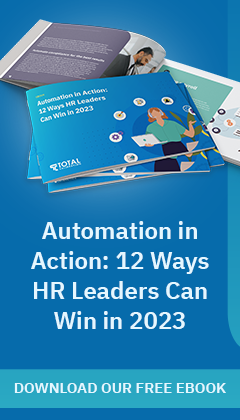Talent development is one of the critical components of business success and longevity as it ensures its growth and sustainability. Companies with efficient employee learning programs have an invaluable asset that allows them to differentiate themselves, which is crucial in the post-pandemic era.
Young job seekers, millennials and Generation Z are passionate about using knowledge to move up the professional ladders and reach better job roles and positions. That could even be the deciding factor when choosing their new work and evaluating job postings.
Over 85 per cent of millennials believe learning and development in the workplace are significant, while 76 per cent of Gen-Z see it as a key to their advancement. They’re well aware of all the benefits new skills provide and how they make them more competent to perform different assignments and start projects.
Nearly 60 per cent of those between 26 and 40 claims that development opportunities are essential when deciding whether to apply for a position. Yet, 74 per cent of employees feel that they aren’t reaching their full potential at work due to the lack of chances for progress.
That could hinder a company as 70 per cent of workers are somewhat likely to leave their current job to work for an organisation known for investing in employee learning and development. Companies that want to attract, recruit and retain young workers should remember how much they value knowledge and investments in their professional growth.
Advantages of Employee Learning and Development that could make or break a business
Knowledge and upskilling are intangible tools that allow employees to improve their positions, get more responsible roles, and develop their expertise. Because of that, all-encompassing learning programs have a value that might even surpass financial incentives and promotions.
Another proof that shows its paramount importance is that the worldwide eLearning market could be worth 325 billion USD (442 billion AUD) by 2025. As a result, learning retention rates will likely increase between 25 per cent and 60 per cent over time. However, people will prefer virtual platforms over face-to-face education due to personalization.
Moreover, comprehensive training programs lead to a 218 per cent higher revenue per employee. That shows that investing in employee learning also means investing in the future of business.
Here’s how successful development programs manifest.
Employee Performance Boost
Workers need all-encompassing training to feel confident in their job roles and perform their tasks well. Without the necessary and relevant skills, they would lack the knowledge to reach maximum results.
Moreover, employees without access to development opportunities will likely be unmotivated and won’t understand the scope nor outcomes of their responsibilities. On the other side, those in companies with employee learning will feel more competent and ready to complete their assignments or take on new ones.
Improved Employee Morale and Satisfaction
Employees want to see that their companies value their work and believe in their future. Learning and development programs are the indicators of a company’s care for its workers and a supportive environment where people can thrive.
Workplace training is also an opportunity to learn what employees wouldn’t have access to otherwise. It shows that the company appreciates them and provides challenges that help them grow and find satisfaction in their work.
Addresses Skill Gaps and Weaknesses
Obstacles are inevitable in every job role, and workers will often struggle with weaknesses concerning their abilities, such as lack of computer competencies or communication setbacks. Personalised training is an ideal opportunity to address these issues and improve the necessary skills.
It ensures the staff has a similar level of knowledge and proficiency, allowing them to work together more closely and generate ideas. Moreover, employee learning helps workers keep up with times, automation, and new technologies through upskilling and reskilling.
Consistent Basic Experience
Companies should nurture regular robust development training that allows employees to have a steady experience that ensures they’re ahead of the competition and in touch with the latest policies and updates. Coherent background knowledge is critical for progress and understanding business goals and project adjustments.
Regular training also ensures workers know the company’s expectations and standards and can work towards meeting them. For that, they need up-to-date information and mental and material tools to perform their tasks.
Improved Employee Retention
When companies invest in their workers, they feel valued and confident that their future is secure and brimming with professional opportunities. As a result, they’ll be less likely to change their workplace and look for a job in companies with better development programs.
Enhanced Employer Branding and Reputation
When looking for vacancies, job seekers pay additional attention to whether a company can nurture their growth and what kinds of tools they use to achieve it. Stellar employee learning and development opportunities can differentiate a company and help it attract new talents.
5 Tips on Implementing Efficient Employee Learning Programs
1. Run Employee Needs Assessment
Each program starts with identifying what it should include and how it helps employees, stakeholders, or customers. That gives it the right direction and addresses skill gaps with proper training and material.
HR departments should consider their workers’ needs, what obstacles they face in their daily operations and what resources could help them navigate these challenges. Perhaps the program already exists within human resources or company development plans but requires tweaking or an overhaul.
When building a new employee training, companies should focus on specific areas, such as time management, diversity or leadership. The goal is to ensure employees get relevant skills that allow them to adjust to changes, perform their jobs with more efficiency or reach their professional objectives.
2. Establish Program Goals
Employee needs and skills assessment will reveal whether the current learning programs and initiatives have any gaps to analyse and turn into the training goals. Whatever the previous evaluation identifies as an issue should become the priority, and companies should gear the initiatives towards solving it.
The employee learning program development should close the gap between the team’s current performance and the ideal one. Companies should consider the methods, practices, and resources they’ll use to help workers improve their skills and how they’ll play out during the training.
3. Develop a Training Plan
After identifying program objectives, it’s time to move on to developing a comprehensive plan that serves as a guide for all future activities. It should consist of learning theories that will make the action plan more effective and boost the ROI.
Instructional design should be a part of the guide, as well as resources and content. All the plan components should be detailed, ensuring consistent and all-encompassing training.
It’s essential to remember that HR departments should pay attention to the learning styles of participants and align the program level with how they take in information. Thus, it’s advisable to run a pilot on a small scale and collect feedback that gives insights into whether the training needs any tweaks.
4. Implement Employee Learning Program
Once HR professionals have all the necessary information, resources and direction, it’s time to implement program initiatives and start with the training. However, companies should first decide whether they’ll invite a third party to coordinate the program or opt for in-house.
At this stage, they should consider employee engagement, scheduling and learning key performance indicators (KPIs). The plan should thoroughly cover the timeline for all activities, events and resources.
The creation of processes, questionnaires and presentations are also necessary for the implementation phase. However, HR professionals or learning and development teams should also consider whether they’ll need specific equipment or facilities and include this element in the planning phase timely.
After that, they should promote campaigns to let employees know about the program and how to participate. The next step is to launch the training and track advancement of each participant.
5. Evaluate Employee Progress
Learning programs require consistent monitoring that allows smooth evaluation and addressing potential setbacks. HR professionals should evaluate whether training meets original objectives and workers are satisfied.
The last stage includes collecting feedback from each stakeholder to identify how effective the learning program was, whether facilitators were informative, and did employees gain new knowledge. Program developers should then include employee performance reviews into the analysis and determine if training had any weak points and meet the goals.
Technology as Employee Learning Training Facilitator
HR teams and instructors are crucial for implementing a human-centric employee learning program that addresses participants’ needs. However, top-notch technology allows training customisation, speed and efficiency.
For instance, 93 per cent of workers want easy-to-complete training and 91 per cent want it to be tailored and relevant. Moreover, 89 per cent wants employee learning programs available anywhere and anytime they need to do their job.
Digital training platforms allow employees to access training whenever they want and adjust it to their schedules, which 85 per cent finds critical. Lanteria HRIS is an HR platform that lets companies align their learning programs with employee needs and ensure their satisfaction.
Companies seek efficient digital support that helps them facilitate training by planning and executing targeted programs, aiming to develop high-performing workers. That’s the principal mission of Lanteria’s learning platform and why it includes an array of features, such as E-Learning courses, quizzes, tests, analytics and webinars.
The variety of options allow customisation, easy access and blended learning techniques that help employees adopt skills and knowledge that align with their individual needs, resulting in enhanced overall performance and professional growth.
Grow high-performing employees and help improve their skills. Click here to get a demo now!



Leave a comment!
You must be logged in to post a comment.